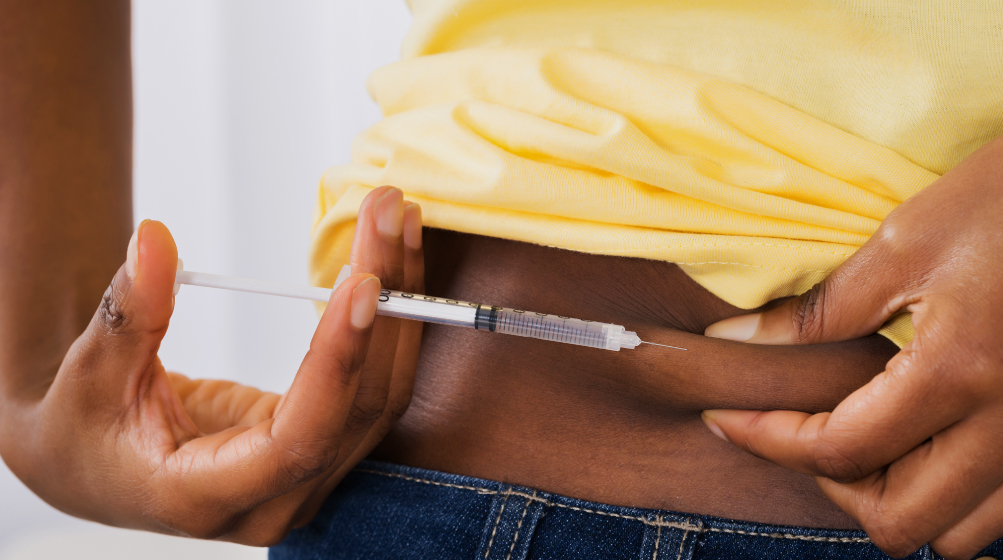If you were to spend a day in the life of Marion Agunda, you would have to find a secluded room or corner at least four times a day to administer an insulin shot. You would have to do it privately to avoid drawing attention to the procedure, because not everybody is calm about the sight of an 8 millimetre stainless steel needle, let alone witnessing a self-injection. But more so, like Marion, you may want to do this in private because it’s not everyday you want to explain to strangers that you’re not sick-and-dying, or in need of laying of hands – but just living with a condition, one that’s manageable.
Insulin and needles have been part of Marion’s life for the past 11 years. She’s 22 now and doesn’t like to think much about some of the negativity that surrounded the first few years after her diagnosis. She prefers to tell you about the nurse who first told her what diabetes was, when she was lying in a hospital bed unsure of why she had woken up feeling off on a school day and suddenly been rushed to hospital.
Much, much later, Marion learned that her late father also had diabetes – and this inevitably increased her likelihood of chartering the same path. However, the part about his life that excites her is that he was a doctor, and when he spoke to people about the condition, they believed him simply because he was a daktari! And we know how Kenyans are fully convinced when a daktari has spoken.
But back to Marion.
Daily, Marion’s carry-ons are not just a phone, wallet, charger, ID and the like. A fanny pack strapped to her waist is a must, and in it are a handful of syringes and thin plastic vials filled with insulin. During the day, she opts for the short acting insulin and at night, the long acting. And when she’s not pinching the side of her stomach to take the jab, she does it on the back of her upper arm. If she strays away from this daily routine, she risks developing severe hyperglycemia (an abnormally high level of glucose in the blood) – and that is a risk she isn’t willing to take.
Although surrounded by supportive family and friends upon her diagnosis, Marion will tell you that many others like her aren’t so lucky. In parts of rural Kenya, socio-cultural perceptions have defined diabetes. It’s been labelled as witchcraft – and in children seen as a punishment for the sins of their kin. Then there’s another crop of people who hear diabetes and immediately think “That one is just drinking a lot of soda!” So to them, diabetes is indulgence, and if they’re to be extreme in our vocab — carelessness. But this carelessness is then tethered to opulence, and as a 2008 study of select African countries showed, diabetes was predominant in urban areas, specifically among “the wealthy and the powerful.” All the same, diabetes is the reality for many more like Marion – from those in the city, to those in the most remote locations.
By this point, Marion will simplify what diabetes is so that you understand that it’s just a condition caused by the body acting up and disturbing insulin-producing cells. She’ll then urge you to go and read more online so that the sight of a needle or self-injection doesn’t shock you.
As part of your homework, Marion may invite you to the Kenya Diabetes Management and Information Centre (DMI Centre) where she volunteers at least twice a month and has done so since 2018. Here, you’d see her in her element, being a beacon of hope to diabetics still in their first year post-diagnosis. You’d even see her bringing them slices of cake from time to time, straight out of her oven – because Marion likes to bake and enjoys feeding people even more.
In these sweet delights she shares, Marion is mindful of the people she meets who have type-2 diabetes, which is what more than 90% of diabetics live with. This type is brought about by lifestyle choices (so, also, not too much cake for them), but like type-1, is manageable once you get into the rhythm of it. But it all begins with regular health check-ups. A 2021 local health report revealed that two-third of diabetic patients in Kenya were undiagnosed. Numbers may have increased or plummeted since, but there is yet to be an official announcement by Kenya’s Ministry of Health.
Marion will end by reminding you that you’re not the only one who doesn’t know about the extremities of diabetes unchecked, like developing diabetic foot ulcers from untreated foot wounds. But once again she’ll say that it’s manageable — but caution you to be careful with the shoes you wear when you’re up and about.
By this point, she trusts you enough to take her third shot in front of you.

